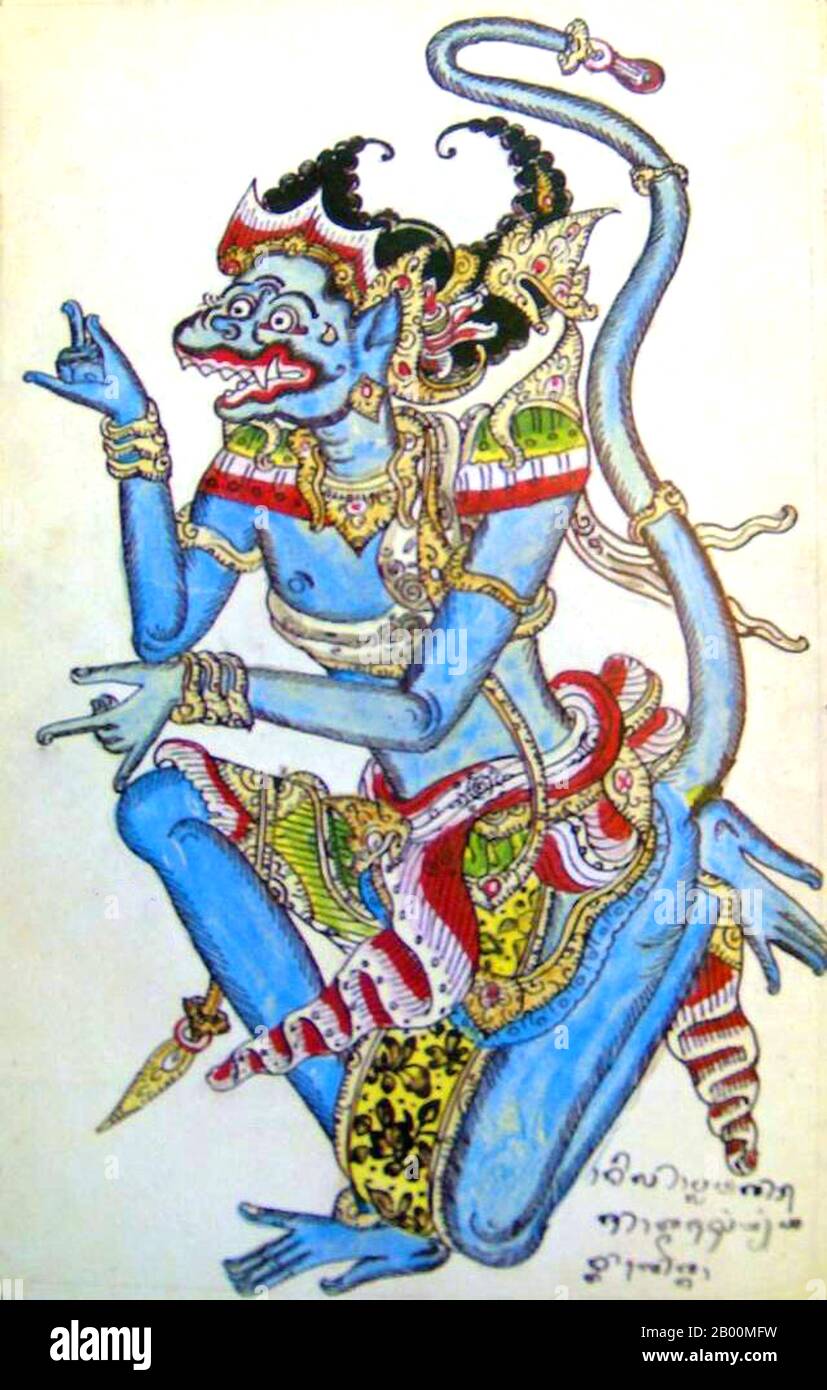Indonesia: Representation of the Hindu God Hanuman from a Javanese Ramayana manuscript. The Hindu deity Hanuman is an ardent devotee of Rama, a central character in the Indian epic Ramayana. A general among the vanaras, an ape-like race of forest-dwellers, Hanuman is an incarnation of the divine and a disciple of Lord Sri Rama in the struggle against the demon king Ravana. The Ramayana is an ancient Sanskrit epic. It is ascribed to the Hindu sage Valmiki and forms an important part of the Hindu canon, considered to be based on historical events

Image details
Contributor:
CPA Media Pte Ltd / Alamy Stock PhotoImage ID:
2B00MFWFile size:
50.5 MB (1.1 MB Compressed download)Releases:
Model - no | Property - noDo I need a release?Dimensions:
3350 x 5264 px | 28.4 x 44.6 cm | 11.2 x 17.5 inches | 300dpiPhotographer:
Pictures From HistoryMore information:
This image could have imperfections as it’s either historical or reportage.
The Hindu deity Hanuman is an ardent devotee of Rama, a central character in the Indian epic Ramayana. A general among the vanaras, an ape-like race of forest-dwellers, Hanuman is an incarnation of the divine and a disciple of Lord Sri Rama in the struggle against the demon king Ravana. The Ramayana is an ancient Sanskrit epic. It is ascribed to the Hindu sage Valmiki and forms an important part of the Hindu canon, considered to be based on historical events. The Ramayana depicts the duties of relationships, portraying ideal characters like the ideal servant, the ideal brother, the ideal wife and the ideal king. The name Ramayana is a tatpurusha compound of Rāma and ayana (going, advancing), translating to ‘Rama's Journey’. The Ramayana consists of 24, 000 verses in seven books (kāṇḍas) and 500 cantos (sargas), and tells the story of Rama (an Avatar of the Hindu preserver-God Vishnu), whose wife Sita is abducted by the demon king of Lanka, Ravana. The epic was an important influence on later Sanskrit poetry and Indian life and culture. The characters Rama, Sita, Lakshmana, Bharata, Hanuman and Ravana are all fundamental to the cultural consciousness of India. There are other versions of the Ramayana, notably Buddhist and Jain in India, as well as Indonesian, Philippine, Thai, Lao, Burmese, Cambodian and Malay versions of the tale.